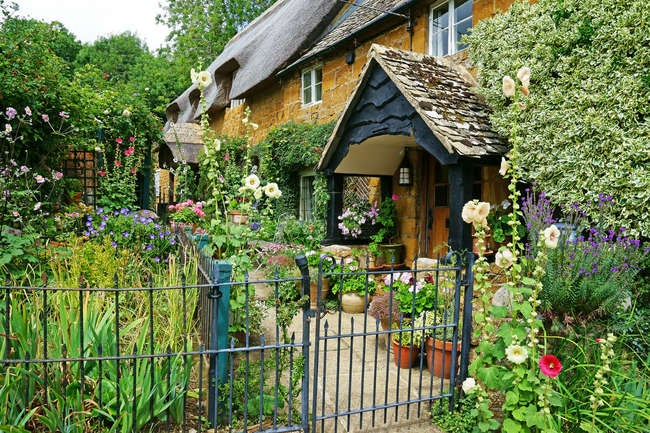We may earn revenue from the products available on this page and participate in affiliate programs. Learn More ›
Elements of a Cottage Garden
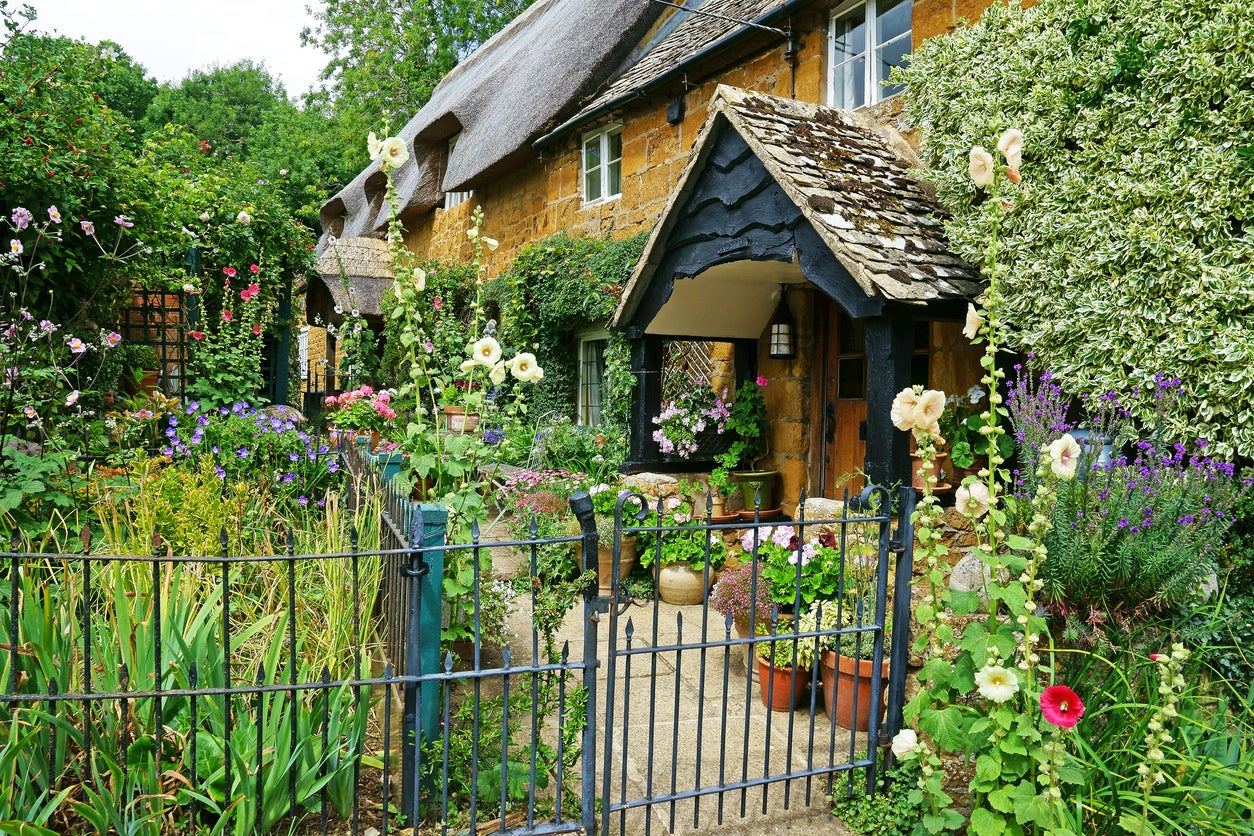
There are no hard and fast rules for creating a cottage garden; these informal, asymmetrical spaces don’t follow any strict plan. Instead, they are intended to mimic nature with its mixture of color and plants overflowing carefully tended, casually designed beds. What English cottage gardens usually have in common is a profusion of various sizes, colors, and shapes of plants that, together, make a visual panorama.
First appearing in the 18th century as a backlash against rigidly formal garden designs, the cottage garden is considered a romantic landscape. Typically sweeping in nature, the gardens feature lush plantings, meandering pathways, inviting benches, and ornate iron gates.
English garden flowers in contrasting colors, shapes, and heights should juxtapose neatly with trimmed hedges in a random pattern that balances traditional elegance with romantic whimsy to look like the garden came straight out of a Jane Austen novel. Try these suggestions to give your garden a touch of that romance and color.
Delphinium (Delphinium elatum)
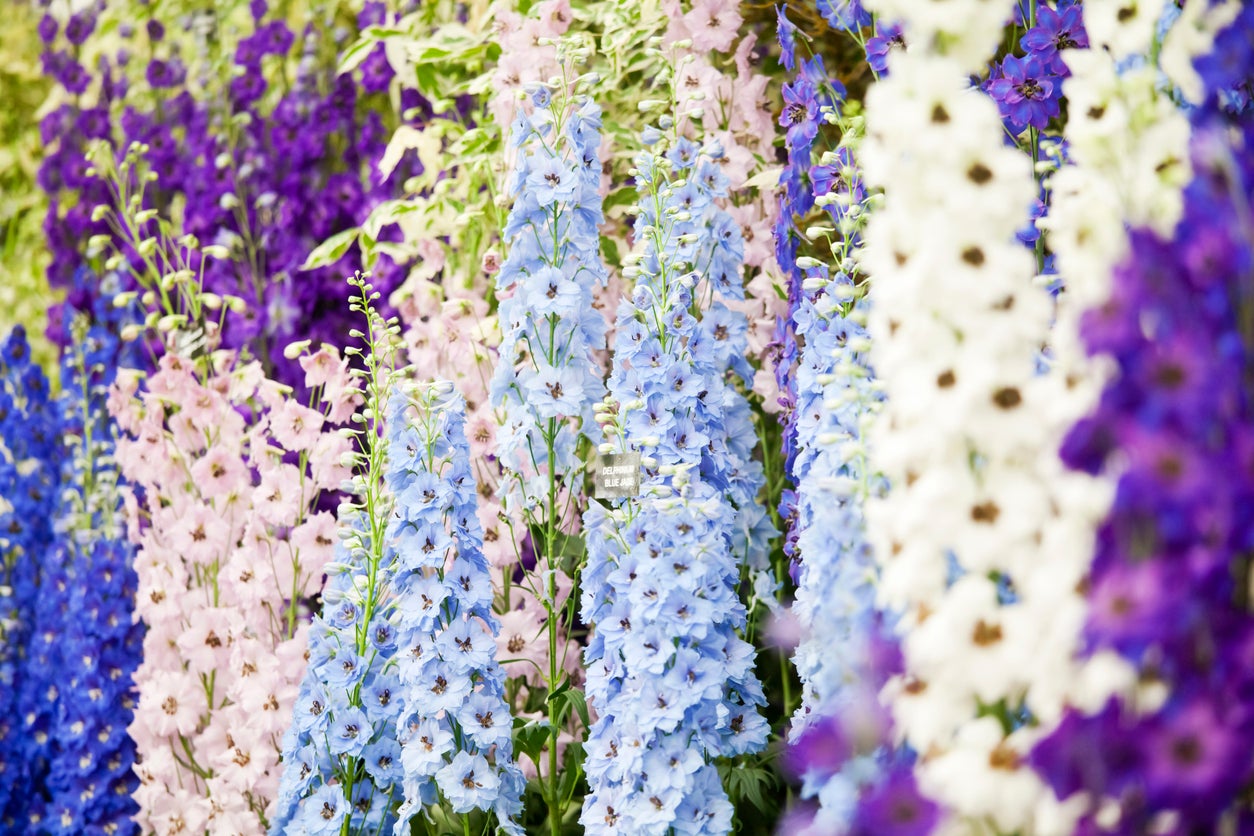
Prized for its showy spikes of blue, purple, and pink that can reach as high as 6 feet, the delphinium creates a great backdrop for other English garden flowers. Hardy in USDA Zones 3 to 7, the flower prefers a sunny spot with well-drained, moist soil, although hot afternoon sun can be too much for this tall, slender beauty.
A perennial from the buttercup family, taller varieties of delphinium might require staking and will appreciate a location without wind. While it can be susceptible to powdery mildew and crown rot, with proper placement and watering, it generally stays healthy.
Rambling Rose (Rosa multiflora)
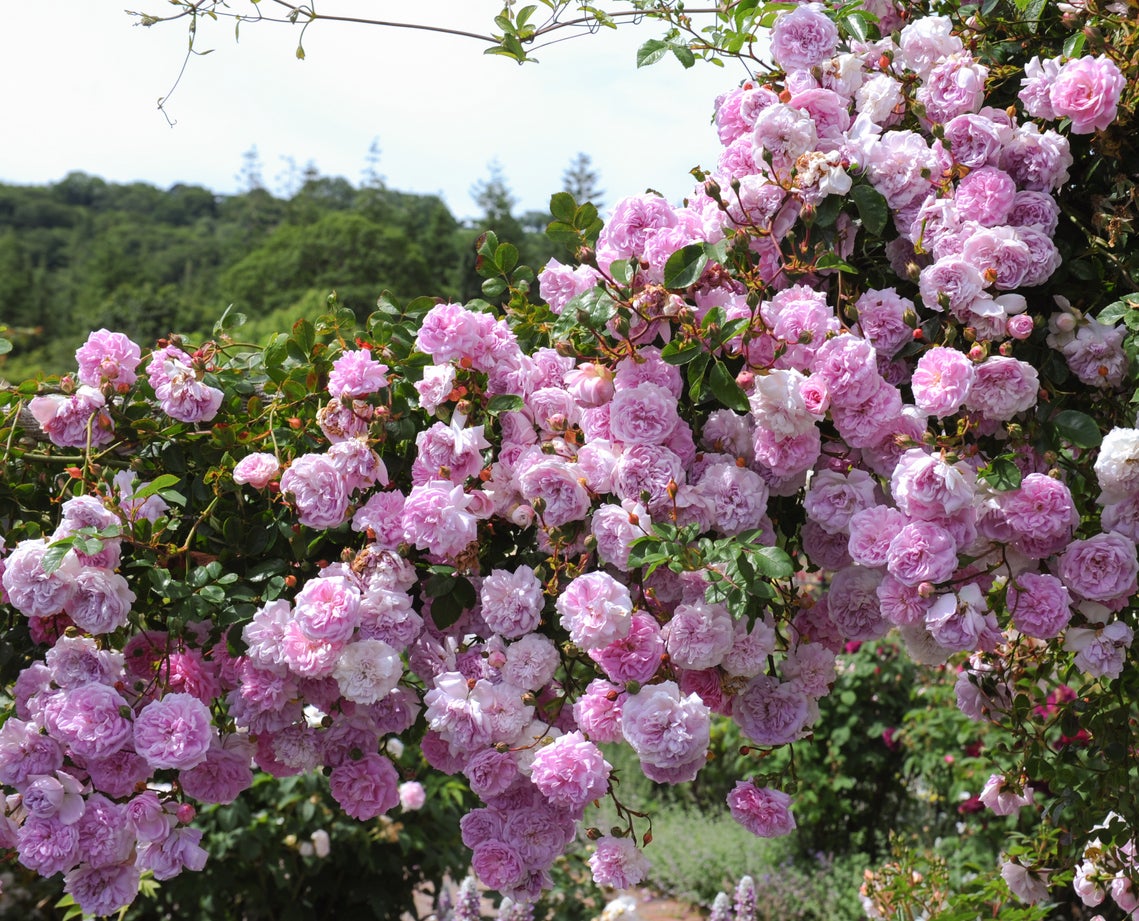
Roses are a staple of a cottage garden. The rambling rose is a vigorous, sturdy plant that can climb a pergola or hide an unsightly structure or wall in the garden. English rose ramblers produce an abundance of fragrant, small roses clustered in large sprays, which creates a cascade of color, usually blooming in late spring or early summer.
This hardy rose grows best in Zones 4 through 10. It thrives on neglect, tolerates poor soil and partial shade, and is generally disease resistant. However, the roses require some pruning to keep them looking their best—and to keep them from taking over a garden bed.
Peony (Paeonia)

Traditionally, peonies come in three colors: white, pink, and red. Best suited for USDA Zones 3 to 7, and grown in full sun and well-drained soil, peonies usually bloom in late May. Available with single or double blooms, these rotund beauties emit a strong fragrance.
After blooming, the glossy leaves on these midsize bushy plants provide a pleasing framework for the blooms of other flowers. The foliage dies off during the winter and will reemerge the following spring. Although they can be divided when they become large, they don’t like being moved. When planting, leave 3 to 4 feet between peonies for proper air circulation and don’t place them too close to trees that will rob them of nutrients. Give them rich soil, but don’t smother them in mulch.
Hollyhocks (Alcea rosea)
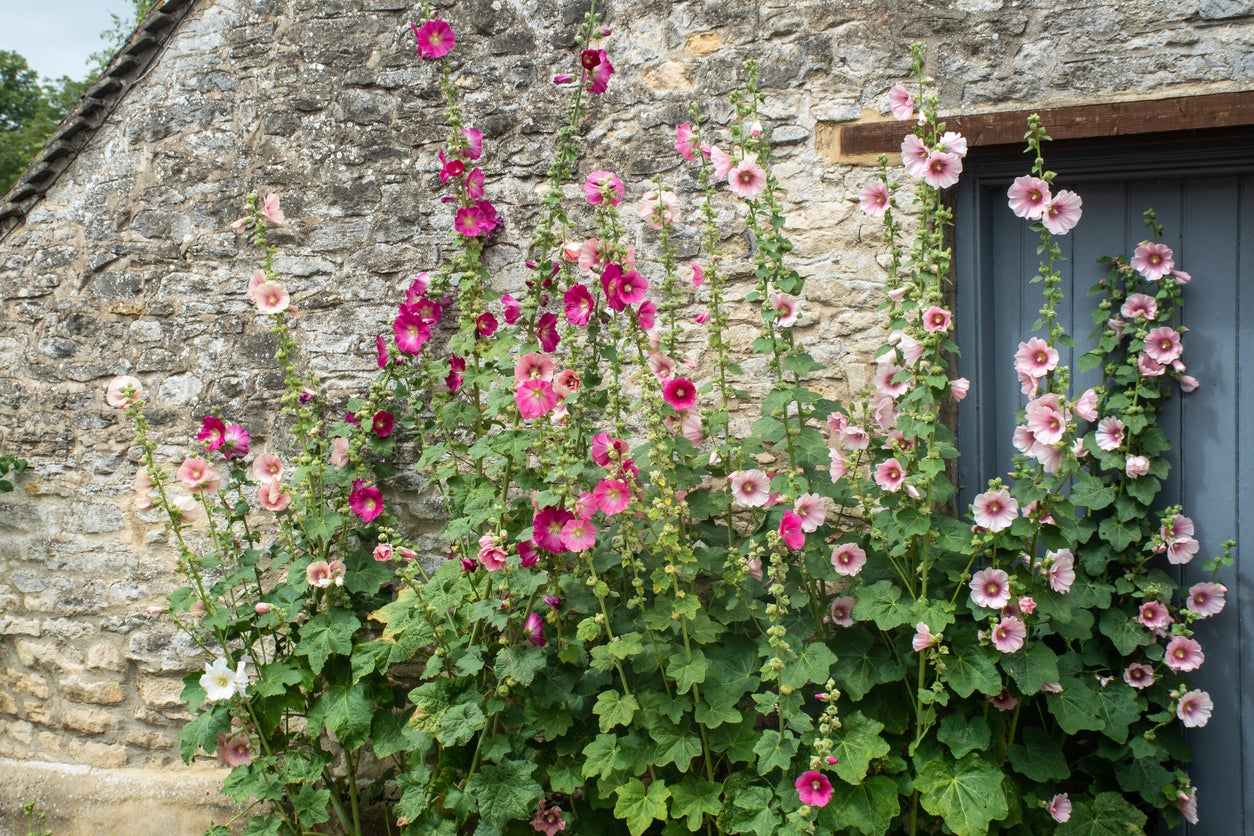
Provide height to a cottage garden with hollyhocks, which typically reach up to 8 feet tall. Stalks of light yellow and pink, as well as darker reds and deep purples, attract pollinators to their striking flowers. This self-seeding biennial symbolizes the circle of life, fertility, and abundance.
Best grown in Zones 3 to 9, hollyhocks prefer full sun and well-drained soil. They bloom from late spring to midsummer, and even until frost. An old-fashioned favorite, the hollyhock had medicinal uses as herbal remedies in past eras. All parts are edible; the flowers are sometimes used in tea.
Lavender (Lavandula)
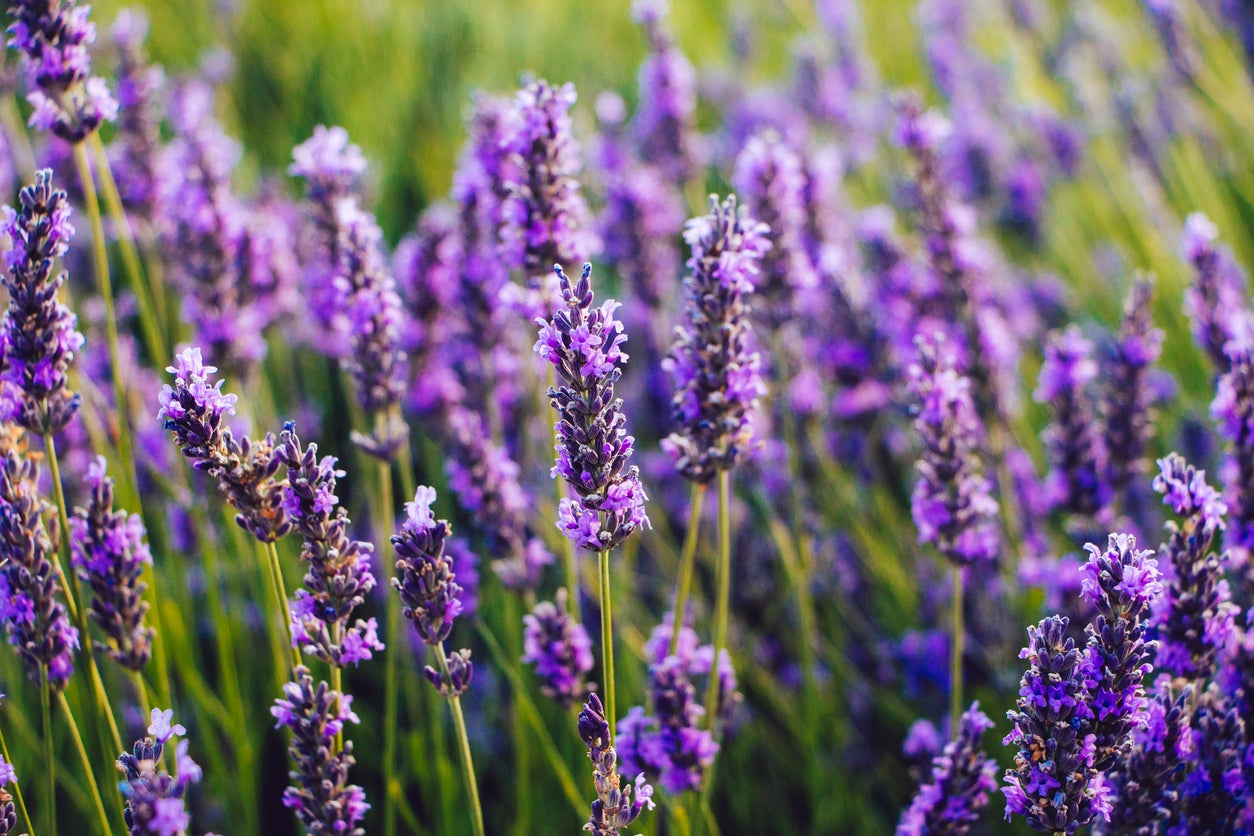
It doesn’t get much more “English cottage garden” than this old-fashioned and fragrant plant. With 47 known species in its family, perennial lavenders can live for 5 to 15 years, and they are annuals in colder zones.
Lavender flowers are frequently used to make potpourri, sachets, and essential oils, and the buds also are used in cooking or summer drinks. Best grown in Zones 5 to 8, lavender thrives in full sun and well-drained—even sandy and gravelly—soil. Reaching only about 2 feet tall, this small shrub balances taller English garden flowers.
Foxglove (Digitalis)
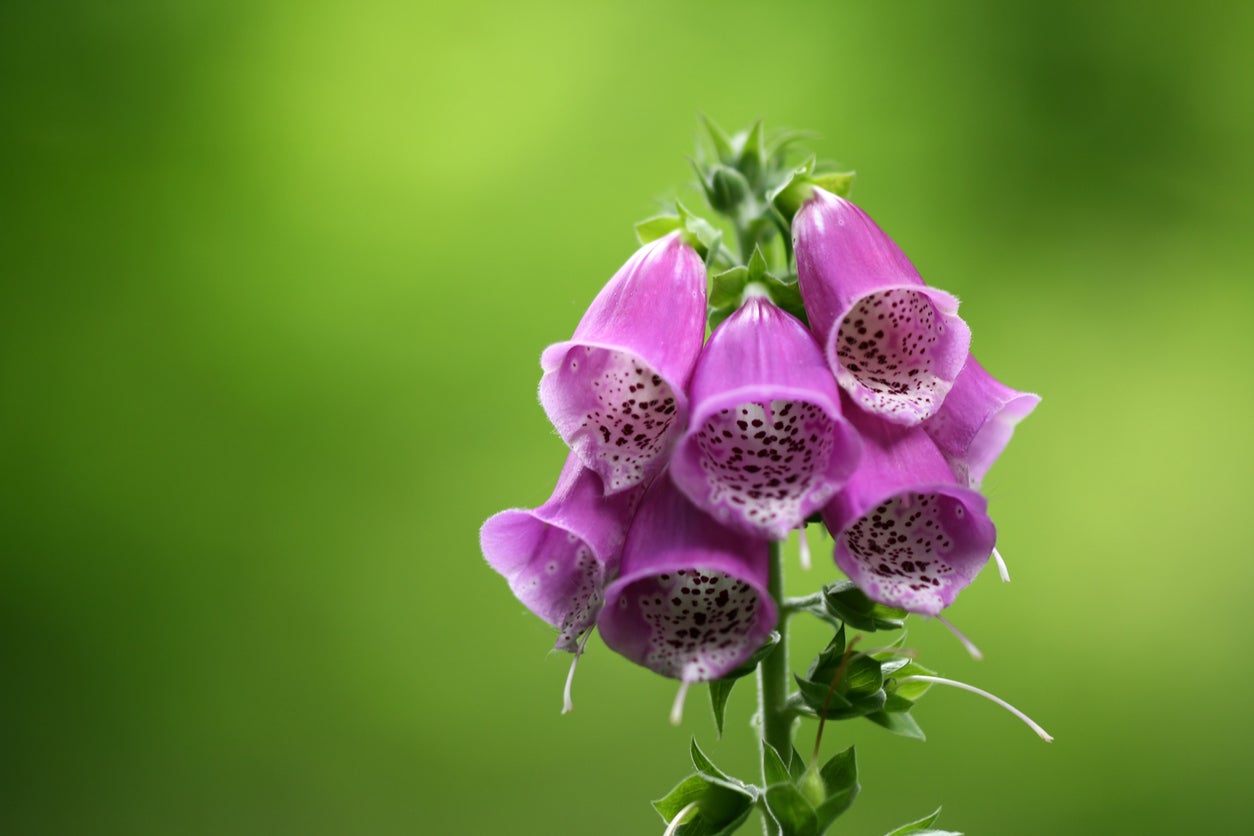
This self-seeding biennial European native can reach 3 to 4 feet tall (and some grow up to 6 feet with proper care), providing additional height in a cottage garden. Its numerous tubular, bell-shaped flowers grow on pointed spikes that bloom in early summer in shades of white, pink, lavender, and purple. The plants grow in Zones 4 to 10, but they can require a bit of shade during the hot afternoon.
Foxglove comes with a couple of warnings. First, it can become invasive. But more concerning is that all parts of digitalis plants—which formerly were used for medicinal purposes to address heart conditions—are toxic.
Hydrangea (Hydrangea macrophylla)

The hydrangea is a great choice for cottage gardens that feature some shady areas. Suitable for Zones 3 through 7, this fast-growing deciduous shrub produces giant balls of flowers from spring through summer and even into early fall. Growing up to 15 feet tall, hydrangeas prefer morning sun and shady afternoons, along with good drainage and plenty of organic material in the soil.
Hydrangeas reward gardeners who give them good care with blooms of blue, white, purple, or pink, depending on the alkalinity of the soil. Pests are uncommon on hydrangeas unless the plants become stressed.
Related: The 15 Best Plants for Rock Gardens
Cosmos (Cosmos bipinnatus)
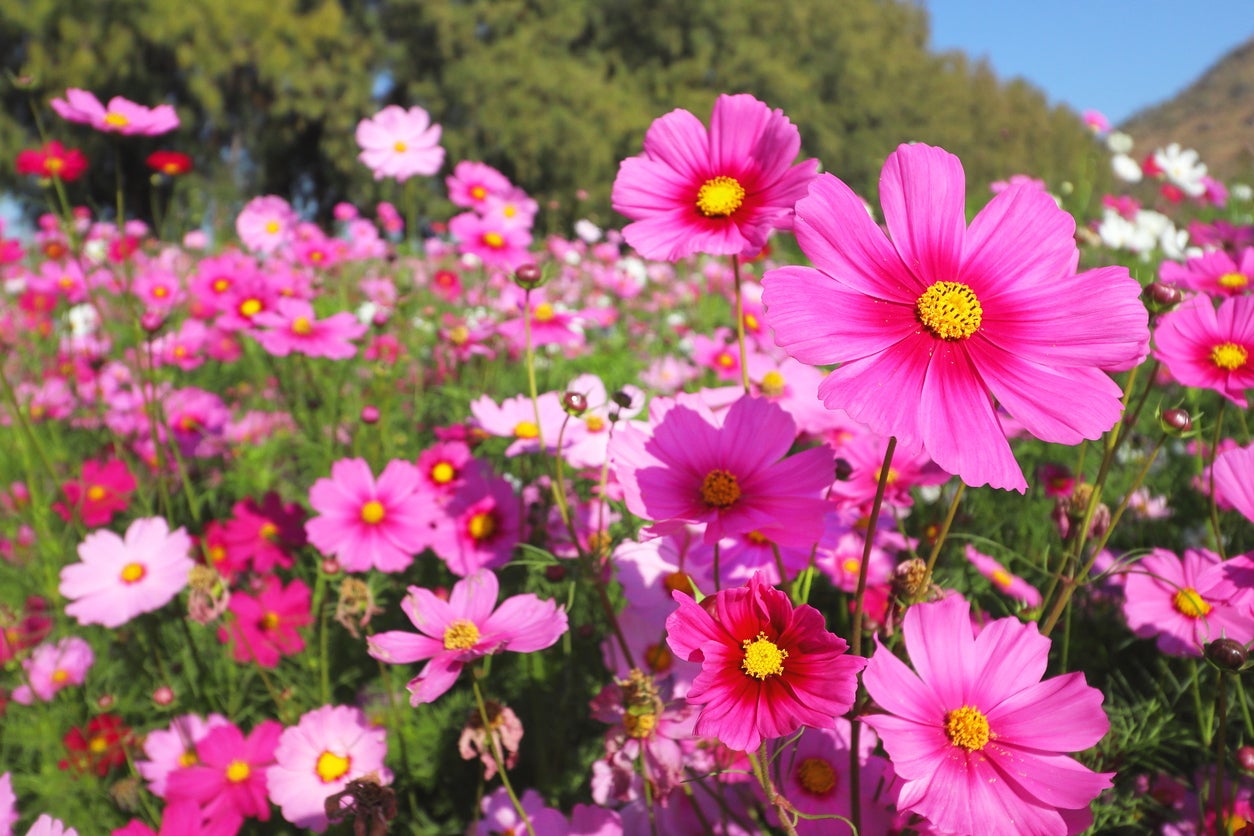
Few flowers impart that airy, dreamy cottage garden feel better than cosmos. With their 2- to 4-foot-high fern-like stems bending gently with the breeze, these plants thrive in sunny spots with soil on the dry side.
White, pink, and light purple daisy-shaped flowers bloom throughout spring and summer. Some varieties (C. sulphureus, or sulphur cosmos) feature blooms in yellow and orange. Because they are profuse bloomers, cosmos prove a good selection for both cottage and cutting gardens.
Wisteria (Wisteria)
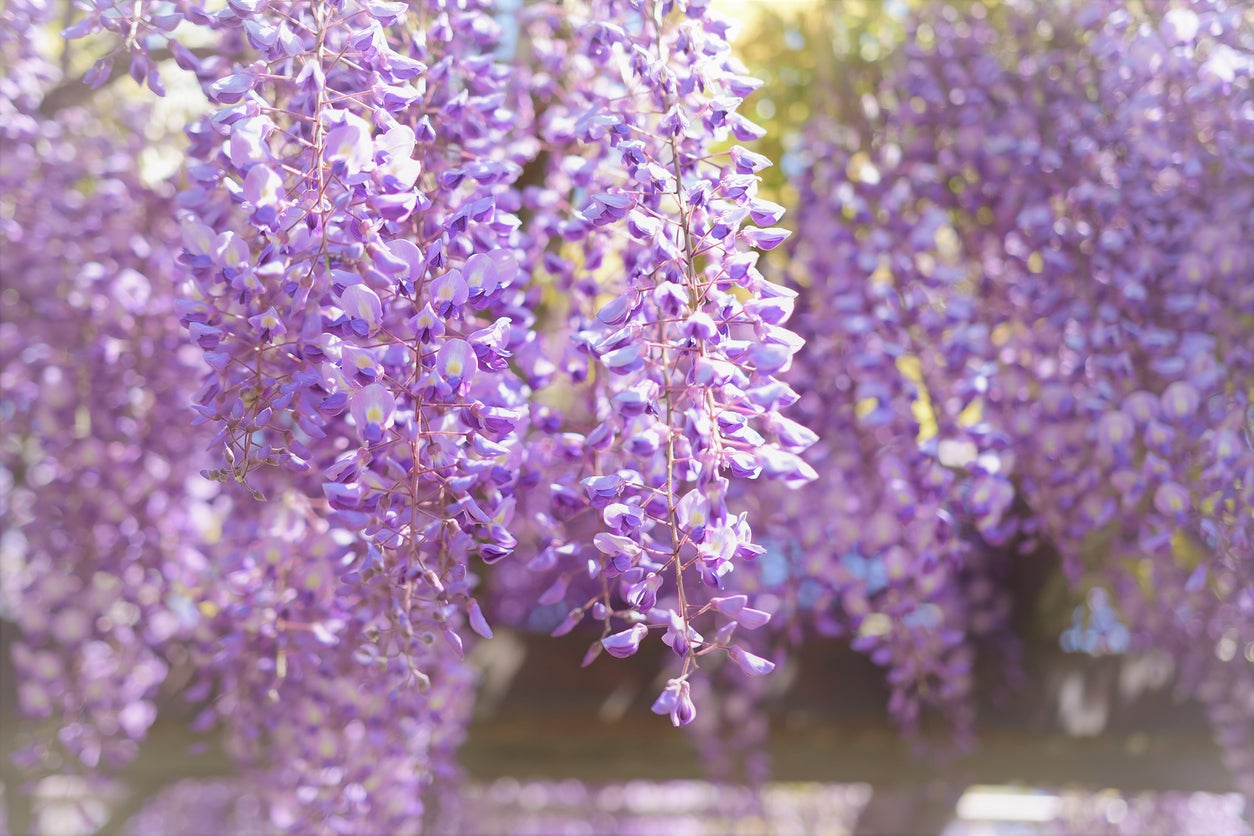
Drape trellises or other garden structures with wisteria, a vining plant that produces racemes (grape-like clusters) of purple flowers on mature plants. Racemes become longer as the plant matures. The plant can reach 66 feet long and might require pruning. Best grown in Zones 5 to 7, wisteria prefers slightly acidic, well-drained soil and full sun.
Originally from China, Japan, and Korea, wisteria symbolizes long life and wisdom. Prized for its delicate beauty, it is sometimes considered an invasive species, and its aggressive growth can cause structural damage unless pruned. All parts of the plant are toxic.
Violets (Viola)
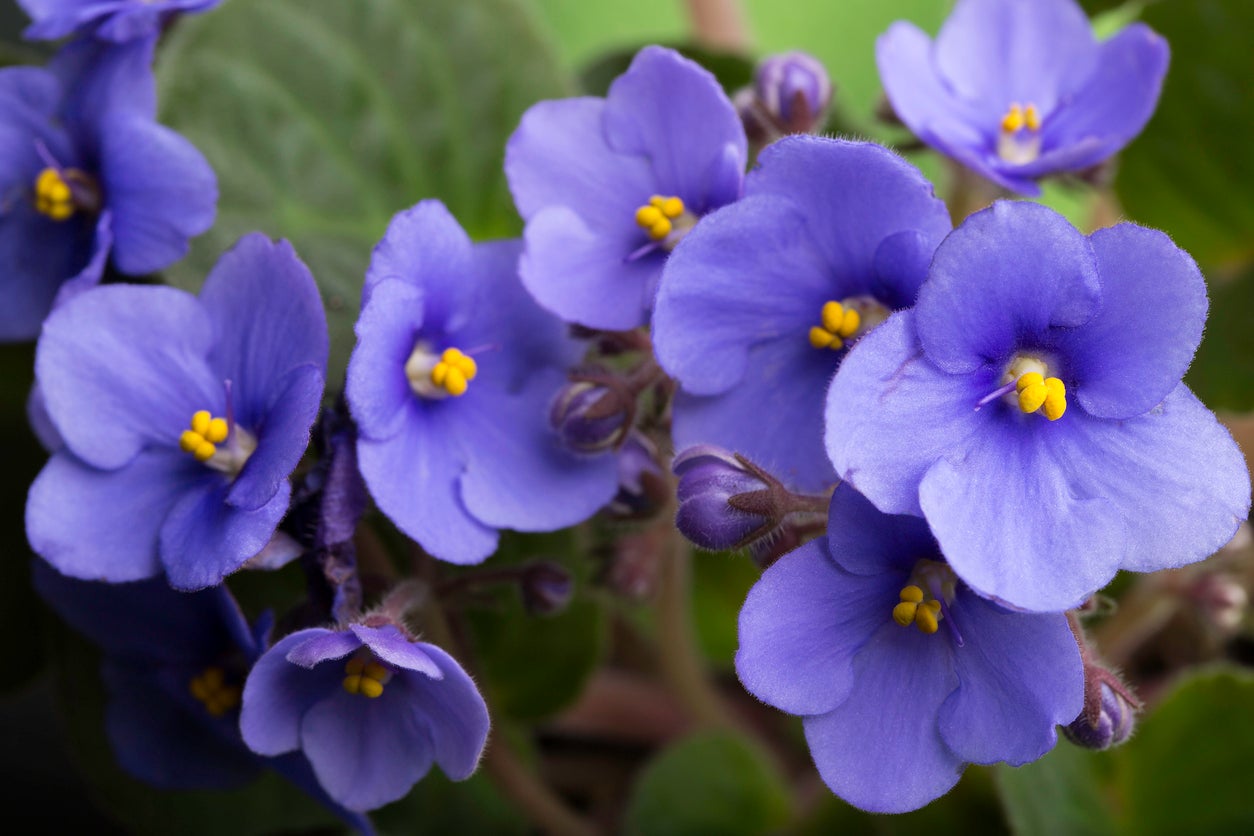
There are more than 400 species of violets, some of which date back to the Greeks in 500 B.C., who considered them a symbol of love and fertility. Lightly fragrant, these small (3 to 9 inches) plants prefer partial shade and moist, rich soil, such as that found in a woodland. Considered cool-season plants, violets can get leggy and struggle during the heat of summer, although they can bounce back to bloom again in the fall.
Although the leaves and flowers are edible, violets should be consumed in small quantities to prevent stomach ailments.
Daylilies (Hemerocallis)
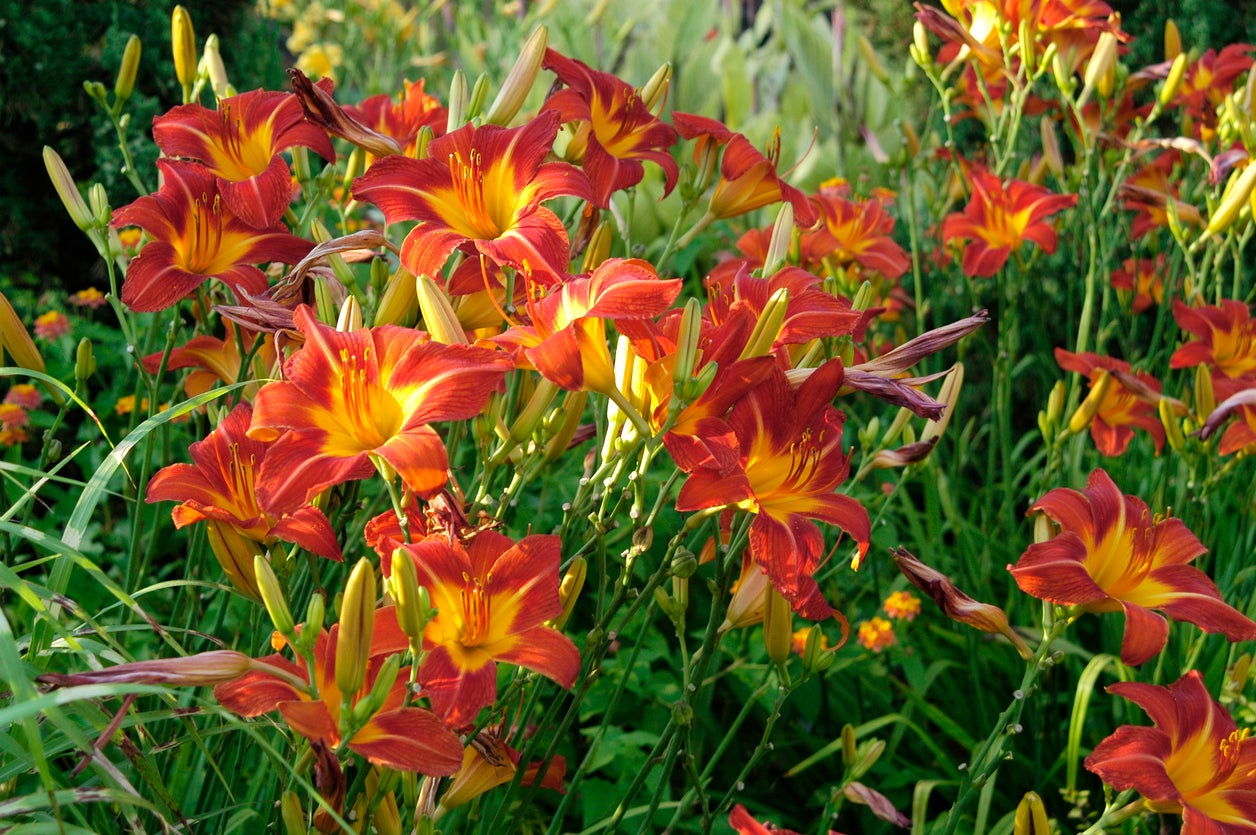
For spectacular blooms in colors ranging from brilliant yellow to the deepest burgundy, nothing beats the daylily. Their dazzling displays of flowers in a range of colors and styles such as single, double, spider, multiform, and ruffled, belie their toughness.
Grown in Zones 4 through 9, daylilies can thrive in full sun to shade and in almost any soil type, although they prefer fertile, well-drained soil and little care. In addition, they are rarely subject to pests or disease.
In Greek, “daylily” means beauty and day, and these flowers are so named for the fact that each flower lasts only a day. However, because they are profuse bloomers, they can grace a garden with gorgeous flowers from late summer to early fall.

Our Best Advice for Beginner Gardeners
We’ll help you set up your first garden—whether that’s a few pots on your patio, a raised bed, or an in-ground plot out back—and select the right plants for your soil and region.

